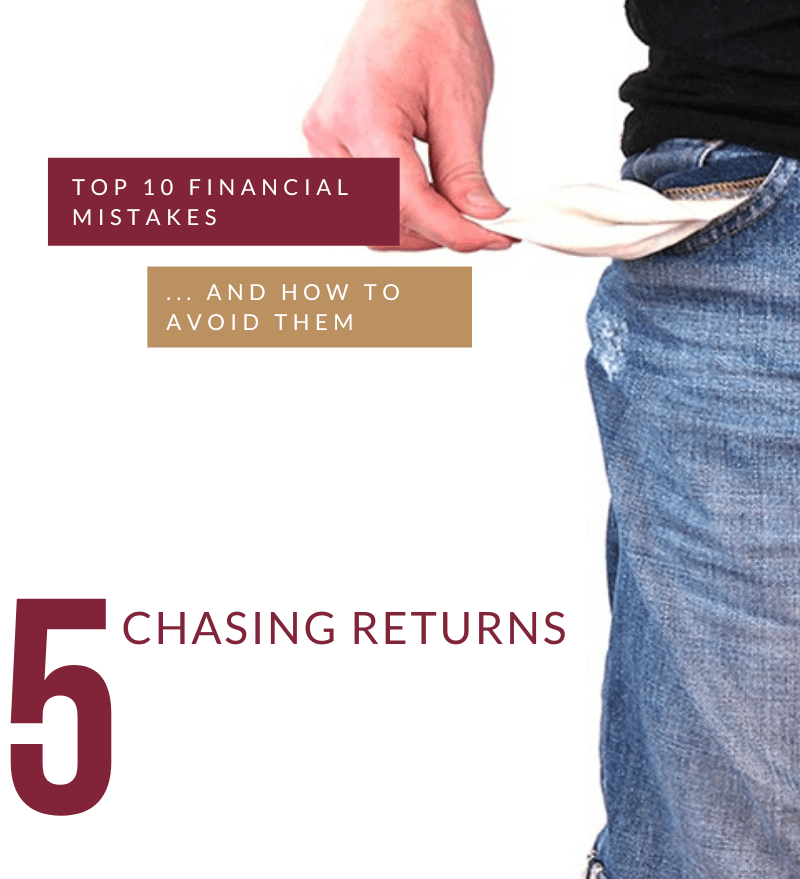“You’ve got to go out on a limb sometimes, because that’s where the fruit is.” -Will Rogers
I’m a believer in that quote up to a point. I like my limbs to be strong enough to support me, and I like to have enough fruit on the limb to justify my risk of potentially falling off. A big mistake when it comes to your finances is running from tree to tree, climbing out on unstable branches in search of the best fruit, or chasing returns.
Let me use a hypothetical situation to illustrate this. I’ll refer to the hypothetical client as “Squirrel.”
One day, Squirrel went to a financial advisor’s office seeking help investing an inheritance. Squirrel had no real investment experience, so the advisor walked him through the risks and rewards of various types of investments and then they went through a risk tolerance analysis. At the end of the meeting, they determined Squirrel would best be served by a conservative growth portfolio, consisting of roughly 60% in U.S. Treasury and Investment Grade Bonds and 40% in stocks of large dividend paying companies.
About 6 months later, Squirrel called the advisor wanting to come in and talk about his investments. When he arrived, he had in his hands a Kiplinger Report and Money Magazine. Squirrel told the advisor he was visiting with friends, and they were telling him how much their investments were returning. In hearing this from his friends, Squirrel wasn’t feeling like his portfolio was keeping up, so he wanted to make some changes. He opened both Kiplinger and Money to their mutual funds rankings and said he thought we should be using these funds. The advisor listened to his thoughts and concerns. The advisor then explained to him that these were all high-risk funds and if they did make this change, he would be 100% in stocks of small companies in the technology sector. That move went against his risk tolerance profile, and against the conversation we had had only six months before. He explained that he had become more accustomed to investing and felt more comfortable in taking on additional risk to better returns.
So, they blew up a perfectly wonderful balanced portfolio and bounced into the tech “tree” seeking returns like his friends. Unfortunately for Squirrel, this was the year 2000 and the technology bubble was about to burst.
When the technology bubble did burst, Squirrel called the advisor and said that the world was ending. He was now sure that the only place for money was in gold. The return on gold was up the previous year while his tech portfolio was getting crushed. So, Squirrel jumped from the tech tree to the gold tree. The next year, the gold tree delivered a 1.6% return and Squirrel was not happy.
With all his tree jumping he had managed to turn his $500k inheritance into about $375k. He was ready to come back to his conservative growth portfolio.
Chasing returns usually means you are grabbing last year’s winners, and typically last year’s winners turn into this year’s disappointments. It also means that you are doing a lot of buying and selling of investments which adds to your costs of investing, and these costs are paid whether you make or lose money on the investment.
When you see information that a mutual fund has returned an average of 10% annually for the past ten years, keep in mind that it wasn’t 10 years of consistent 10% returns, it was more likely some years of returns less than 10% (maybe even negative returns) and some years of returns over 10%. Also, know that the average investor doesn’t typically receive these average returns because the average investor isn’t in the investment for 10 years. They will bail on a negative return year and chase off for a better return.
The moral of the story is this: When it comes to investing, if you want to be financially successful, it is best to build your portfolio with investments that match your risk tolerance and stay with them.
These are the opinions of Legacy Wealth Management, LLC and not necessarily those of Cambridge, are for informational purposes only, and should not be construed or acted upon as individualized investment advice.
Mike Berry is a Registered Representative offering securities through Cambridge Investment Research, Inc., a Broker/Dealer, Member FINRA/SIPC. Investment Advisor Representative, Cambridge Investment Research Advisors, Inc., a Registered Investment Advisor. Legacy Wealth Management, LLC and Cambridge are not affiliated. Cambridge does not offer tax advice.
Copyright ©2022 Mike Berry. All Rights reserved. Commercial copying, duplication or reproduction is prohibited.

